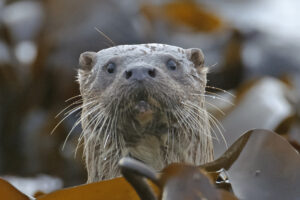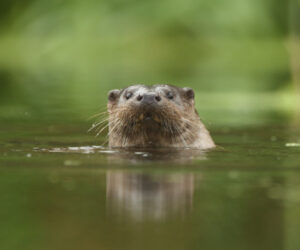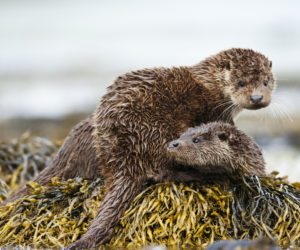The Eurasian otter is one of our top predators, feeding mainly on fish, waterbirds, amphibians and crustaceans. Otters can be distinguished from Mink by their much larger size, more powerful body, paler grey-brown fur, broader snout and broader, pale chest and throat. The otter is well suited to a life on the water as they have webbed feet, dense fur to keep them warm and can close their ears and nose when underwater.
Behaviour
Otters have their cubs in underground burrows, known as a ‘holt’. Excellent and lithe swimmers, the young are in the water by 10 weeks of age.
Size
- Length: 90cm plus a tail of 45cm
- Weight: 10kg
- Average lifespan: up to 10 years
Status
Classified as Near Threatened on the IUCN Red List. Listed under CITES Appendix 1, protected in the UK under the Wildlife and Countryside Act, 1981, and classified as a Priority Species in the UK Biodiversity Action Plan.
Distribution
A rare but widespread animal, now found almost throughout the country, but absent from parts of central and southern England, the Isle of Man, the Isles of Scilly and the Channel Islands.
When to see
Jan – Dec
Facts
- Seeing the signs of otters is far easier than seeing the animals themselves. Along riverbanks and waterways, look for five-toed footprints (about 6-7cm long) and droppings or ‘spraints’. Otters leave spraints in prominent places, such as fallen trees, weirs and bridges, as ‘scented messages’, helping them to find mates and defend territories. They contain visible fish bones and have a distinctive, pleasant smell, reminiscent of Jasmine tea!



